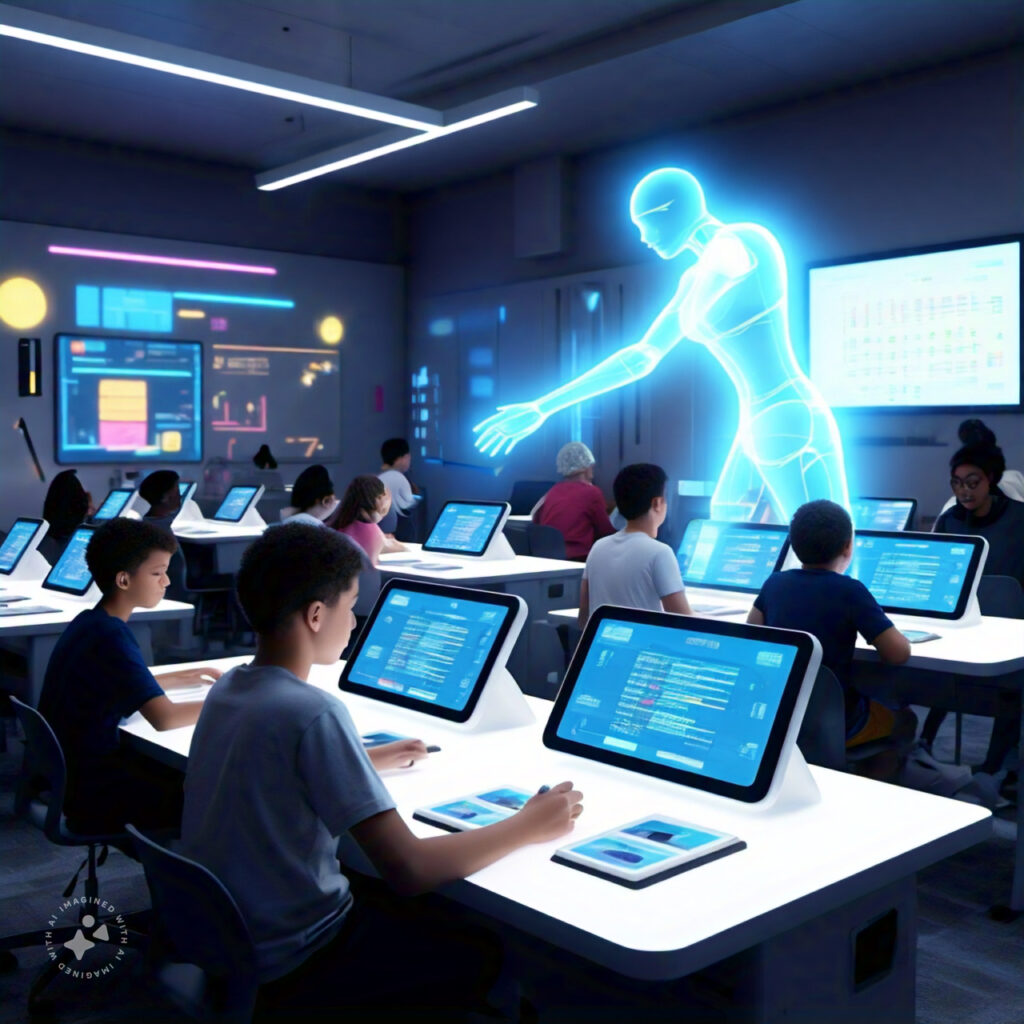
“The Impact of 5G Technology on Education”
The introduction of 5G technology is reshaping various sectors, including education. With its lightning-fast speeds, low latency, and massive connectivity, 5G is set to revolutionize how students learn, educators teach, and institutions manage operations. This article explores the transformative potential of 5G in the education sector and its long-term implications.
1. Introduction to 5G Technology
5G, the fifth generation of mobile networks, offers significantly improved capabilities compared to its predecessors. With speeds up to 100 times faster than 4G and the ability to connect millions of devices simultaneously, 5G ensures seamless connectivity.
Key features of 5G include:
- Enhanced Speed: Enables real-time data transfer.
- Ultra-Low Latency: Reduces delay in data communication.
- High Device Density: Supports numerous devices in a small area.
2. How 5G is Transforming Education
2.1 Remote Learning
5G enables high-quality video conferencing for remote learning, ensuring students in rural or underserved areas can access the same resources as those in urban centers.
2.2 Virtual Reality (VR) and Augmented Reality (AR)
With 5G, VR and AR applications can run smoothly, creating immersive learning experiences in subjects like history, science, and geography.
2.3 Interactive Classrooms
5G supports interactive digital whiteboards, live polling, and collaborative tools, enhancing student engagement and participation.
2.4 Real-Time Language Translation
5G-powered AI tools enable real-time translation, breaking language barriers in global classrooms.
2.5 Enhanced Research Capabilities
Faster internet speeds allow students and researchers to access large datasets, simulations, and cloud-based applications effortlessly.
3. Applications of 5G in Education
3.1 Smart Campuses
5G facilitates smart campuses with interconnected devices for security, energy management, and student services.
3.2 Mobile Learning
Students can access high-quality educational content on their smartphones without connectivity issues, promoting learning on the go.
3.3 Personalized Learning
AI-powered adaptive learning platforms thrive on 5G, offering personalized learning paths based on individual progress and needs.
3.4 Global Collaboration
5G allows students and educators worldwide to collaborate on projects in real-time, fostering cross-cultural learning.
3.5 Online Examinations
5G ensures the smooth functioning of online exams, reducing technical glitches and enhancing fairness.
4. Benefits of 5G in Education
- Improved Accessibility: Makes education accessible to students in remote and underserved areas.
- Enhanced Engagement: Supports interactive and immersive teaching methods.
- Efficient Administration: Automates campus operations through IoT devices connected via 5G.
- Global Integration: Bridges the gap between international students and educators.
- Scalable Solutions: Supports growing student populations without compromising connectivity.
5. Challenges of Implementing 5G in Education
5.1 High Costs
Setting up 5G infrastructure in schools and universities requires significant investment.
5.2 Digital Divide
Not all students and institutions have equal access to 5G technology, leading to disparities.
5.3 Cybersecurity Risks
5G networks are vulnerable to cyberattacks, raising concerns about data security and privacy.
5.4 Device Compatibility
Older devices may not support 5G, necessitating upgrades that could be costly for students and institutions.
5.5 Training Requirements
Educators need training to integrate 5G-enabled technologies effectively into their teaching methods.
6. Future Trends in 5G and Education
6.1 AI-Powered Learning Platforms
5G will enable more sophisticated AI-driven learning tools for adaptive and personalized education.
6.2 Holographic Classrooms
Holograms of educators and experts can deliver lectures in real-time to students worldwide.
6.3 Lifelong Learning
5G supports continuous education for professionals through accessible, high-quality online courses.
6.4 Smart Libraries
Digital libraries powered by 5G will offer seamless access to a vast array of resources, including e-books, videos, and research papers.
6.5 Collaborative Global Networks
5G will expand global education networks, fostering international partnerships and knowledge sharing.
7. Examples of 5G in Action
- China’s Smart Education Initiative: Leveraging 5G to create virtual classrooms and support AI-driven learning.
- South Korea’s Smart Schools: Using 5G to integrate VR, AR, and IoT for enhanced learning experiences.
- Verizon’s 5G EdTech Program: Supporting U.S. schools with 5G-enabled tools and technologies.
- European Union’s 5G Trials: Testing 5G applications in education, including AR-based field trips.
8. Conclusion
5G technology has the potential to transform education by making it more inclusive, interactive, and efficient. While challenges such as costs and digital divides need to be addressed, the benefits of 5G far outweigh its drawbacks. As 5G adoption grows, it will redefine the education landscape, preparing students and educators for a more connected and technologically advanced future.
Would you like this article tailored or converted into HTML format? Let me know!